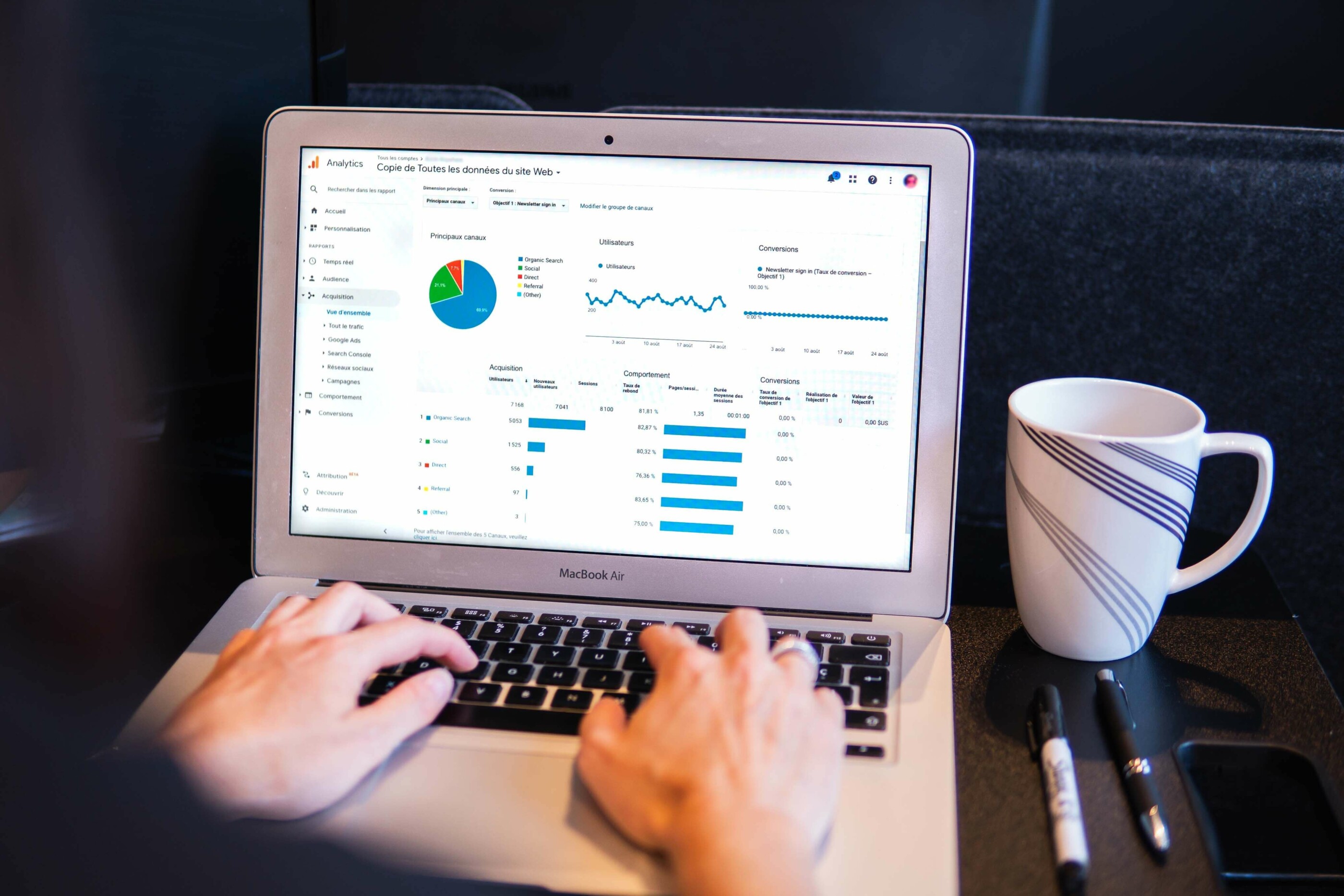Both measurement and evaluation are tools for keeping track of a person’s or a group’s development in a business or academic setting. The results of the measure evaluation aid in developing prospective and efficient solutions that might be implemented to guarantee key performance in business and educational establishments.
Measurement is a systematic procedure for figuring out an object’s characteristics. For example, it determines a thing’s speed, height, density, weight, and width. However, measurements can only be made of physical characteristics when it is necessary to measure qualities that cannot be determined through instruments.

This is where evaluation becomes essential. It aids in making judgments regarding teaching practices, methods, strategies, tactics, effectiveness, etc. However, this blog post will discuss the difference between measurement and evaluation and why measure evaluation matters in the business or educational establishments.
What Is Performance Measurement?
Performance measurement is a measurement that can be used to evaluate the efficacy and efficiency of initiatives and programs. Performance measurement is a structured methodology for gathering, examining, and evaluating how “on track” a project or program meets its targets for results, objectives, and goals.
A company often measures performance to show accountability, aid decision-making, and enhance procedures. However, be aware that this technique does not dictate what must be monitored; businesses must create performance metrics based on the demands of their projects and environment.
Examples of Performance Measurements Are as Follows:
- Monitoring the accounting department’s capacity to recover past-due debts receivable
- Monitoring the engineering department’s ability to develop new items quickly
- Monitoring the availability of money managed by the finance department
- Calculating the amount of stock that the materials management department keeps on hand
- Monitoring the production department’s scrap production
- Monitoring the sales team’s capacity to generate new business from existing clients
What Is Program Evaluation?
Program evaluation is a systematic process for acquiring, analyzing, and using information. It is used to address inquiries regarding initiatives, policies, performance, and programs, particularly those about their efficacy and efficiency.

These studies evaluate the efficacy of programs. For example, they could consist of assessing impact, cost-effectiveness, and the degree of goal fulfillment.
Process Evaluation
Process evaluation is a technique used by an organization to assess how well its members carry out a program. However, instead of focusing on the results of a program, a process evaluation examines its usability and procedural viability. In addition, it assesses if program activities were carried out as intended and produced the desired outcomes.
Outcome Evaluations
According to its definition, outcome evaluation is a measurement used to assess the success or failure of a project. Evaluating the advancement of the outcomes or end targets that the program seeks to reach also gauges the program’s consequences on the target population.
Most of an outcome evaluation’s attention is paid to participant input and how the activity changed or affected them. It is interested in the impact the activity had on them.
Impact Evaluation
An evaluation of the intervention’s impact examines how it influences outcomes and whether these impacts are intentional or not. It is necessary to hypothesize how those impacts would have played out in the absence of the intervention to conduct impact research appropriately. Information about the direct and indirect positive and negative effects of an intervention is provided by impact evaluation.
Design Evaluation
An evaluation design is a framework developed to evaluate a program’s advantages objectively. The choice of an evaluation design is influenced by the evaluation questions and effectiveness standards, as well as by the resources at hand and the required level of precision.
Formative Evaluation
During the development phase, formative evaluation involves data collection and information that may be used to increase the effectiveness of the lesson. A formative evaluation assesses the strengths and flaws of education while it is still in the planning stages, intending to change it to increase its effectiveness and appeal. Any education that still allows for revision is thus a possible formative evaluation option.
Evaluation of Programs
This is a systematic evaluation of a program or policy’s operation or results compared to a set of stated or implied standards to improve the program or policy. At least 35 distinct forms of evaluation can be included in program evaluation: needs analyses, accreditation, cost/benefit analyses, effectiveness and efficiency evaluations, formative and summative evaluations based on goals, data quality, process and results from evaluations, and more.

There Are Several Reasons Program Evaluation Is Beneficial:
Evaluation of Programs Can:
- Understanding, measuring, confirming, or enhancing the impact of goods or services on consumers or clients – nonprofit funders increasingly demand these “outcomes” analyses as proof that the organizations are aiding their people. Yet, too frequently, service providers (whether for-profit or charity) rely solely on their passions and instincts to determine their clients’ or customers’ true needs and whether the products or services provide what is needed.
- Enhance distribution methods to be less expensive and more efficient. Delivery of a good or service eventually turns into a set of ineffective tasks that are both more expensive and inefficient than necessary. Evaluations can reveal the strengths and faults of a program so that it can be improved.
- Check to see if you are acting how you believe you are acting. Plans for the provision of services frequently undergo significant change when they are implemented. Through monitoring and evaluation, the program’s efficacy can be verified.
- Encourage managers to think carefully about their program’s objectives and methods for achieving them and determining if they have been achieved.
- Produce information or confirm findings that can be utilized to promote community services and public relations.
- Create reliable comparisons between programs to determine which ones should be kept, for instance, in light of impending budget cuts.
- Thoroughly evaluate and outline successful initiatives for replication elsewhere.
Cost-Effectiveness Evaluation
One economic evaluation function is comparing the costs and outcomes of alternative medical interventions. Unlike other forms of economic evaluation, which consider broader consequences, it concentrates on evaluating the intervention’s influence on clinical metrics. Decision-makers who aim to accomplish a certain health information objective can benefit from the outcomes.
Difference Between Measurement and Evaluation
Standardized tests, statistics, and numbers all play a role in measurement. Evaluation gains from the chance to utilize the data quality to compare and assess a person or an object’s success rate, which may not always be measurable.
Professionals in their field of expertise can assess paintings, books, and individual performances. Since each measurement can be compared, adding measured data to the evaluation adds verification and produces precise performance indicators.
Measurements are more objective since they may be compared and recorded against numerical standards. On the other hand, because the evaluator and the metrics employed are related to human sciences and performance, evaluation could be perceived as being more subjective.
Evaluation involves comparing a measurement that provides more details about a relationship, whereas measurement is how you give anything a descriptive or numerical value. Measurement does not complement an evaluation, but an evaluation does.
The process of figuring out a physical object’s characteristics and size is known as measurement. On the other hand, Evaluation is a continuous process of quantification and qualitative interpretation based on value judgments.

Quantitative observations—observations that can be stated numerically—are accounted for via measurement. Evaluation, on the other hand, incorporates both quantitative and qualitative findings. Measurement is assigning numbers to a person or thing following predetermined guidelines.
In contrast, evaluation entails attributing grades, levels, or symbols per predetermined norms. While evaluation considers all aspects, including cognitive, emotional, and psychomotor learning, measurement focuses on one or more characteristics or qualities of a person or thing.
For example, measurement examines something’s size in numerical terms, including how much, how tall, how quickly, how hot, how far away, and how little it is. Evaluation, in contrast, determines how well something is by bringing meaning or value judgment to the measurement.
For instance, if you want to know someone’s height, you can measure them with a tape measure and get a number like 188cm. This is a measurement of this person’s height.
An evaluation will now be conducted if you wish to know how this individual’s height compares to other people’s heights. In this instance, you are contrasting this individual’s height (measurement) with the heights of others. Therefore, this procedure is an evaluation.
What Is Measure Evaluation?
For more than two decades, measure evaluation has been honored to serve. Measure evaluation helps developing nations increase their capacity for quality data collection, analysis, and application to health information and improvement.
To enable nations to make better decisions and maintain positive health information outcomes over time, measure evaluation develops tools and methods for rigorous monitoring and evaluation, offers evidence to solve health concerns, and builds health information systems.
To encourage better use of data in planning, government policy, managing, analyzing, and reviewing population, healthcare, and nutrition programs, measure evaluation actively collaborates with USAID, its country missions, and colleagues to enhance quality data collection, analysis, and presentation.
The underlying assumption is that better information utilization will result in better health services, systems, and outcomes in the health sector.
How Do We Determine Good Measures?
We Can Determine Good Measure Evaluation by the Following:
Reliability
Consistency in a metric is referred to as reliability. Psychologists consider three sorts of consistency: internal consistency, consistency across things, and consistency across researchers (inter-rater reliability).
Test-retest Reliability
Giving a group of participants the same test more than once over a certain period is known as the test-retest reliability approach in research.
Parallel Forms Reliability
Giving the same set of people several tests to see whether the findings remain the same while utilizing various research methodologies is known as parallel forms reliability.
Inter-rater Reliability
Inter-rater reliability testing may involve numerous people assessing a sample group and comparing their results to prevent influencing factors like an assessor’s personal bias, mood, or a human mistake.
Internal Consistency Reliability
There are two common techniques to assess the internal consistency reliability of your study, which typically entails confirming that your internal research methodologies or components thereof produce consistent findings.

Validity
The degree to which a measure’s scores accurately reflect the variable it is designed to assess is known as its validity. But how do scientists get to this conclusion? One aspect they take into account is reliability. Researchers should feel more confident that the scores accurately reflect the data when a measure has strong test-retest reliability and internal consistency.
However, a metric could be very accurate while having zero validity. Thus, there must be more to it. Imagine someone trying to assess someone’s self-esteem by holding a ruler up to their index finger as an absurd example.
This person might believe that people’s index finger length indicates their level of self-esteem. Despite high test-retest reliability, this measurement would have zero validity. The length of one person’s index finger being a centimeter longer than another’s would not reveal who had a better sense of self-worth.
Why Measurement and Evaluation Matter
Measurement and evaluation are crucial because they show how well a learning and development process works so that instructors can organize their lessons properly for the following steps.
Additionally, measurement gives you a firm foundation for evaluating because it gives you a real comparison point for the objects. Evaluation is also essential for changing the curriculum and altering the teaching and learning process.
Conclusion
Both measurement and evaluation are essential to research, whether it is humanistic or scientific. Measuring is all about statistics and having the ability to assign a value to someone’s output or skill. Evaluation makes it easier to assess success or failure using facts and expertise.

Evaluation does not require numerical measurements because it evaluates performance. The primary distinction between measurement and evaluation nowadays is that one is quantitative, and the other is qualitative.
FAQs
Why Is Measure Evaluation Important?
Measure evaluation is crucial. To carefully design the future steps of education, measure evaluation assesses the efficacy of the learning and growth processes. Braun et al. (2006) claim that evaluation aids in directing students to get closer to accomplishing educational goals.
What Is the Relationship Between Measurement and Evaluation?
A quantitative evaluation of an individual’s performance is known as measurement. It is a qualitative evaluation of how well—or satisfactorily—a person has performed. A situation is described by measurement. It determines its value or worth.
What Is the Purpose of Measurement?
Measurement can be used for quality control, monitoring, safety, making something fit (design, assembly), and issue resolution, among other things.
What Is the Purpose of Evaluation?
Evaluations assist in identifying the aspects of a program or effort that are successful and those that could be improved. A program, practice, intervention, or initiative can be studied in-depth, with a thorough evaluation, to see how effectively it meets its objectives.

